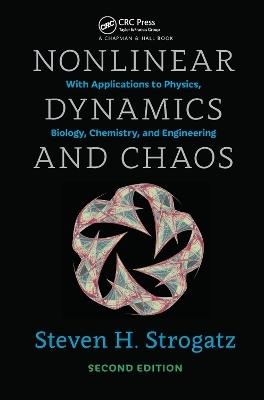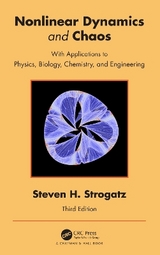
Nonlinear Dynamics and Chaos
CRC Press (Verlag)
978-0-367-09206-1 (ISBN)
- Titel erscheint in neuer Auflage
- Artikel merken
This textbook is aimed at newcomers to nonlinear dynamics and chaos, especially students taking a first course in the subject. The presentation stresses analytical methods, concrete examples, and geometric intuition. The theory is developed systematically, starting with first-order differential equations and their bifurcations, followed by phase plane analysis, limit cycles and their bifurcations, and culminating with the Lorenz equations, chaos, iterated maps, period doubling, renormalization, fractals, and strange attractors.
Steven Strogatz is the Schurman Professor of Applied Mathematics at Cornell University. His honors include MIT's highest teaching prize, a lifetime achievement award for the communication of mathematics to the general public, and membership in the American Academy of Arts and Sciences. His research on a wide variety of nonlinear systems from synchronized fireflies to small-world networks has been featured in the pages of Scientific American, Nature, Discover, Business Week, and The New York Times.
Preface 1. Overview 1.0 Chaos, Fractals, and Dynamics 1.1 Capsule History of Dynamics 1.2 The Importance of Being Nonlinear 1.3 A Dynamical View of the World PART I. ONE-DIMENSIONAL FLOWS 2. Flows on the Line 2.0 Introduction 2.1 A Geometric Way of Thinking 2.2 Fixed Points and Stability 2.3 Population Growth 2.4 Linear Stability Analysis 2.5 Existence and Uniqueness 2.6 Impossibility of Oscillations 2.7 Potentials 2.8 Solving Equations on the Computer Exercises 3. Bifurcations 3.0 Introduction 3.1 Saddle-Node Bifurcation 3.2 Transcritical Bifurcation 3.3 Laser Threshold 3.4 Pitchfork Bifurcation 3.5 Overdamped Bead on a Rotating Hoop 3.6 Imperfect Bifurcations and Catastrophes 3.7 Insect Outbreak Exercises 4. Flows on the Circle 4.0 Introduction 4.1 Examples and Definitions 4.2 Uniform Oscillator 4.3 Nonuniform Oscillator 4.4 Overdamped Pendulum 4.5 Fireflies 4.6 Superconducting Josephson Junctions Exercises PART II. TWO-DIMENSIONAL FLOWS 5. Linear Systems 5.0 Introduction 5.1 Definitions and Examples 5.2 Classification of Linear Systems 5.3 Love Affairs Exercises 6. Phase Plane 6.0 Introduction 6.1 Phase Portraits 6.2 Existence, Uniqueness, and Topological Consequences 6.3 Fixed Points and Linearization 6.4 Rabbits versus Sheep 6.5 Conservative Systems 6.6 Reversible Systems 6.7 Pendulum 6.8 Index Theory Exercises 7. Limit Cycles 7.0 Introduction 7.1 Examples 7.2 Ruling Out Closed Orbits 7.3 Poincare-Bendixson Theorem 7.4 Lienard Systems 7.5 Relaxation Oscillators 7.6 Weakly Nonlinear Oscillators Exercises 8. Bifurcations Revisited 8.0 Introduction 8.1 Saddle-Node, Transcritical, and Pitchfork Bifurcations 8.2 Hopf Bifurcations 8.3 Oscillating Chemical Reactions 8.4 Global Bifurcations of Cycles 8.5 Hysteresis in the Driven Pendulum and Josephson Junction 8.6 Coupled Oscillators and Quasiperiodicity 8.7 Poincare Maps Exercises PART III. CHAOS 9. Lorenz Equations 9.0 Introduction 9.1 A Chaotic Waterwheel 9.2 Simple Properties of the Lorenz Equations 9.3 Chaos on a
| Erscheinungsdatum | 08.07.2019 |
|---|---|
| Verlagsort | London |
| Sprache | englisch |
| Maße | 152 x 229 mm |
| Gewicht | 929 g |
| Themenwelt | Mathematik / Informatik ► Mathematik ► Analysis |
| Mathematik / Informatik ► Mathematik ► Angewandte Mathematik | |
| ISBN-10 | 0-367-09206-9 / 0367092069 |
| ISBN-13 | 978-0-367-09206-1 / 9780367092061 |
| Zustand | Neuware |
| Informationen gemäß Produktsicherheitsverordnung (GPSR) | |
| Haben Sie eine Frage zum Produkt? |
aus dem Bereich



